#led diode circuit
Explore tagged Tumblr posts
Text
https://www.futureelectronics.com/p/semiconductors--lighting-solutions--light-engine-led-assemblies--light-engines/ess015w-0350-42-erp-power-4119364
Optic light engine, Led light engine fiber optic, led light module, led voltage
100 - 277Vac, 14.7W, 350mA, 24-42V, [0-10V, TRI...], IP64 LED Driver
#ERP Power#ESS015W-0350-42#Lighting Solutions#LED Assemblies#Light Engines#optic light engine#fiber optic#module#led voltage#Light-Emitting Diode#Led headlights#led light#led lamp#led replacement bulbs#led diode circuit#led assemblies
1 note
·
View note
Text
https://www.futureelectronics.com/p/electromechanical--circuit-protection--esd-protection/nup2105lt1g-onsemi-4180536
Electrostatic discharge protection, Bi-Directional ESD Protection, LED Printing
NUP2105L Series 350 W Dual Line CAN Bus Protector ESD Protection Diode - SOT-23
#Circuit Protection Devices#ESD Protection & Diode Arrays#NUP2105LT1G#onsemi#electrostatic discharge protection#Bi-Directional#LED Printing#ESD protection circuit#ESD protection equipment#USB#Protection solution#CAN Bus Protector
1 note
·
View note
Text
https://www.futureelectronics.com/p/electromechanical--circuit-protection--esd-protection/nup2105lt1g-onsemi-7467806
Bus ESD Protection Diode, ESD protections circuit, Electrostatic discharge protection
NUP2105L Series 350 W Dual Line CAN Bus Protector ESD Protection Diode - SOT-23
#Circuit Protection Devices#ESD Protection & Diode Arrays#NUP2105LT1G#Onsemi#Bus#ESD protections circuit#Electrostatic discharge protection#equipment#Diode Array devices#Low Capacitance ESD Protection#high-voltage ESD#ESD protection array#LED Printing
1 note
·
View note
Text
https://www.futureelectronics.com/p/semiconductors--Led-lighting-components--led-driver-modules-rev--constant-current-acdc-led-drivers/xi055c180v054bsj1-signify-north-america-1084261
AC/DC led driver circuit, light emitting diode, high-power LED
100 - 277Vac, 55W, 100 - 1800mA, 18-54V, [0-10V], IP66 LED Driver
#Constant Current AC/DC LED Drivers#XI055C180V054BSJ1#Signify North America#ac dc led bulb driver#Module#linear led driver ic#circuit#light emitting diode#high-power LED#LED technology#LED matrix display#LED Driver replacement
1 note
·
View note
Text
https://www.futureelectronics.com/p/semiconductors--optoelectronics--infrared-emitters-detectors/hdn1102w-tr-stanley-electric-9066162
Infrared emitters manufacturers, Ceramic infrared, emitter circuit, infrared light,
3 x 1.5 mm 60° 870 nm 20 mA Surface Mount Infrared Emitting Diode
#Stanley Electric#HDN1102W-TR#Optoelectronics#Infrared Emitters#Programmable emitters#Detector circuit#infrared diodes#manufacturers#Ceramic infrared#emitter circuit#infrared light#Emitting diode#led#diodes#detector circuit#IR emitter
1 note
·
View note
Text
https://www.futureelectronics.com/p/electromechanical--circuit-protection--esd-protection/esd5z3-3t1g-onsemi-8196941
What is ESD protection, ESD protection arrays, Diode Array devices
ESD5Z Series 5 V 105 pF 3.3 Vrwm TVS and ESD Protection Diodes - SOD-523
#onsemi#ESD5Z3.3T1G#Circuit Protection Devices#ESD Protection & Diode Arrays#what is ESD protection#ESD protection arrays#Diode Array devices#suppression#equipment#Video Line Protection#Electrostatic discharge protection#circuit#LED Printing
1 note
·
View note
Text
Light Bars vs. LED Light Bars: What’s Best for DJs and Stage Setups?
Lighting plays a defining role in shaping the experience of a live event. Whether managing energy on a dance floor or setting mood transitions in a performance venue, lighting bars have become essential tools in both stage and DJ setups. But there’s often confusion between traditional light bars and LED light bars—two fixtures that might look similar, yet perform very differently.
This article outlines the differences, use cases, and practical considerations to help identify which type of fixture works best in real-world applications.

Contrasting lighting in action: Traditional light bars offer warm ambiance, while LED bars deliver color-driven dynamics.
Understanding the Two: What Makes Them Different?
The term “light bar” has evolved from its original meaning. Traditionally, it referred to long linear fixtures using halogen or fluorescent lamps—tools commonly used in theatres, early live productions, or static wash lighting.
By contrast, LED light bars represent a modern take on the same format, built with energy-efficient diodes and designed for color mixing, pixel control, and dynamic effects. Their rise in popularity has coincided with the growth of compact stage setups, digital control systems, and mobile DJ rigs.
Today, both versions still have a place in the lighting world, but LED variants have become the go-to for setups requiring more than just basic illumination. They’re now widely available through professional Audio Video supply stores that serve live production, education, and entertainment sectors.
Output Capabilities: Warm Wash vs. Programmable Effects
Choosing between the two often starts with the kind of visual atmosphere you need to create.
Traditional light bars emit a warm, consistent glow. They’re suitable for soft fills or mood lighting but lack adaptability unless fitted with gels or combined with dimmers.
LED light bars offer integrated RGB or RGBW color mixing. That means quick transitions, color cycling, and visual movement with minimal effort. Many models also include sound-activated and chase modes, offering automated visuals that respond to music or timing cues.
LED bars are frequently used in DJ booths, club ceilings, and truss setups, especially when motion and color variety are part of the visual experience.
Control and Integration
Older light bars rely on analog control—on/off switching or standalone dimmers. While functional, they offer limited interactivity.
Modern LED bars, however, support DMX protocols, giving users complete control over color, brightness, speed, and timing through lighting desks or software platforms. They can be incorporated into multi-fixture scenes, respond to preset programs, or be used in sync with sound sources in real time.
When designing a setup that requires coordination between audio, video, and lighting elements, fixtures compatible with stage lighting control systems streamline programming and ensure more consistent results.
Installation and Power Efficiency
Another key advantage of LED fixtures lies in their portability and power draw.
Traditional bars consume more electricity and generate heat, which can be a concern in tightly packed venues or portable rigs. They also tend to be bulkier and heavier, requiring more hardware for safe mounting.
By contrast, LED bars are lightweight, efficient, and often daisy-chainable, allowing for both power and signal to run across multiple units from one source. This is particularly helpful in compact venues, where circuits may be shared with sound and video gear.
Fixtures designed for quick deployment and efficient cabling are now a staple across many audio-visual equipment sellers , especially those serving mobile DJs and touring techs.
Durability and Maintenance
Reliability is always a concern in live environments. Traditional light bars use bulbs or tubes that are prone to breakage or burnout over time. Regular maintenance is required, especially during transport or frequent setup.
LED bars are built with solid-state components and are far more resistant to shock and movement. With lifespans measured in tens of thousands of hours, they’re often chosen for applications where maintenance access is limited or downtime must be avoided.
When evaluating durability for recurring events, look for fixtures listed under professional stage lighting gear, where features like rugged casings and tour-friendly designs are common.
Practical Applications
DJs and Performers
LED bars are ideal for DJ booths and mobile rigs. They can be mounted above, behind, or alongside the performer to enhance visual energy. Sound-active modes also allow these bars to sync with beats and transitions without needing a dedicated operator.
Venues and Clubs
Smaller clubs or multi-use halls benefit from LED bars due to their low power demands and mounting flexibility. Even a few fixtures placed strategically can transform a flat room into a performance-ready space with dynamic light coverage.
Theatrical Use
Traditional bars still find use in theatres where consistent warm wash is required. However, LED fixtures can now replicate those tones digitally, offering the same ambiance with added control and energy savings.
For mixed-use stages, combining older light bars for soft fill and LED versions for movement effects can strike a balance between mood and adaptability.
Pixel Control and Design Freedom
More advanced LED bars offer pixel mapping, allowing each segment of the fixture to be controlled independently. This opens up creative design possibilities like chasing sequences, animated waves, or pulsing accents—all from a single unit.
While not essential for every event, pixel control can elevate lighting design from simple color changes to layered visual storytelling. These features are increasingly found in fixtures within the DMX-controlled lighting categories commonly supplied by full-service Audio Video shops.
Ease of Use in Quick Turnaround Setups
In fast-paced environments like weddings, one-nighters, or short changeovers, speed matters. Many LED bars come with auto modes, built-in programs, or wireless remotes. These simplify setup while still offering engaging effects.
Combined with power efficiency and long LED lifespan, these traits make LED bars a go-to for situations where setup time is limited but performance quality must remain high.

LED light bars are being configured for an event setup, offering control, reliability, and efficient power management in dynamic venues.
Final Thoughts
Both light bars and LED light bars have roles in today’s live production landscape. Traditional fixtures continue to serve specific functions in stage design, but LED bars are now the preferred choice for flexible lighting design, energy savings, and control integration.
For those designing systems around DMX, compact rigging, or mobile use, LED light bars offer unmatched versatility. They’re compatible with the broader ecosystem of control surfaces, rigging hardware, and accessories typically found at specialty pro audio and lighting stores serving the live event and production industries.
#audio video installation#audio video stores#DJ#Dj lightings#DJ set up#Events#Pro audio equipment's#Pro audio shop#Pro audio gears#Professional Audio#Dj equipment's#dynamic led#static lighting
2 notes
·
View notes
Text
List of technological-based names
Stylus
Monitor
Key
Tele/Tela/Tella
Teevee (TV)
Wifi
Ashdiemi (HDMI)
Usbee (USB)
Adden (Add-on)
Esdee (SD)
Sidi/Seedee/Cidi (CD)
Sidirom (CD-ROM)
Veches (VHS)
Aicee (AC)
Camera
Eledi/Eledee (LED)
Cable
Ether (Ethernet)
Exray/Eksray (X-Ray)
Circuit
Efetee/Efeti (FET)
Diode
Volt
Analog
Coil
Antenna
Oscil (oscillator)
Piezo (piezoelectric)
Fuse
Ariem (RAM)
Memory
Fyle
Savas (save as)
Browser
Binary
Urel (URL)
Achcu (HQ)
Page/Paige
Peng/Pengi/Pengee (PNG)
Icon
Doc
Signal
Data/Datta
Scroll
Audio
Buzz
Cache
Crash
Architect/Architex
Mech/Mecha
Engi (engineer)
Eiti/Ietee (IT)
Tech/Tek/Techa/Teka
Oxide
Carbon
Silicon
Crystal
Ceramics
Mercury
Dell
Ibem (IBM)
Java
Ashtemel (HTML)
2 notes
·
View notes
Text
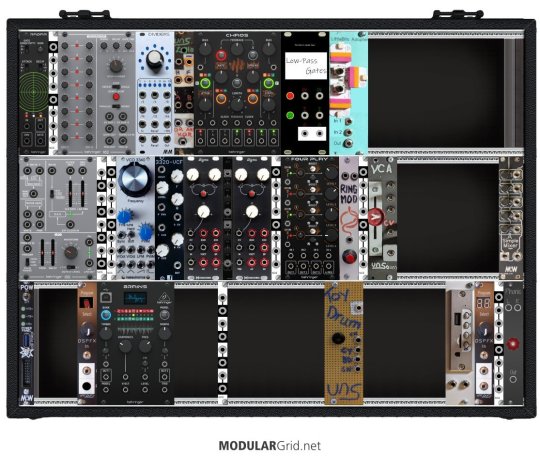
Finally got my Eurorack system updated on ModularGrid — I hadn't gotten around to setting up a few of my custom modules, like the Harald Bluetooth Receiver, the Toy Drum, my true diode Ring Modulator, and my analog logic module "Lola".
Starting with the top left is the Behringer Radar, a contact mic and input amplifier with a gate and a triggered envelope. It's a version of the Mutable Instruments Ears (itself an adaptation of the MTM Mikrophonie); the big change is that all the sensitivity and envelope jumpers are brought out to front panel switches.
Next is one of North Coast Synthesis's "Passive Multiples and Friends", which I built as a mult.
Next is the Behringer Model 182, a clone of the Roland Model 100-series analog sequencer. (A Christmas gift from my wife's parents!)
Next is the MidCentury Modular Dividers, which combines a binary clock divider (simultaneous ÷2 - ÷128) and an adjustable (÷2 - ÷9) divider, both based on CMOS chips. (Built from a PCB/panel set).
Next is my homebrew analog logic module Lola. It has two sections: the unary input which takes one signal and outputs its inverse and its half- and full-wave rectified versions, and the binary input which gives you the OR, AND, and XOR of two signals. (Lola is named that because it's mostly based on the Mutable Instruments module "Kinks". I left off its S&H and added the XOR.)
Next is Chaos, a clone of the MI Marbles random gate and voltage generator.
Next is a set of two low-pass gates, made from vactrols, which I built onto a buggy (malformed) version of my oscilloscope module panel.
Next is my LittleBits Adapter, which lets me plug in the magnet-based circuit building toy modules including those from the Korg collab.
On the second row, we start with the Behringer Model 150, another Roland 100 series clone; this one is noise, a S&H, a ring mod (actually a chip based four quadrant multiplier), and an LFO.
Next looks like another Passive Multiples and Friends, but this one is my Simple Cascading Fixed Amplifier, a set of four fixed amplifiers set up to do x2, x10, or x20 without modifications and up to x400 with self-patching.
The next is a Passive Multiples and Friends, this one an OR Combiner meant to combine multiple gate or trigger signals.
Next is the Kassutronics VCO 3340, an analog VCO I built from the PCB/panel set — basically the CEM3340 chip broken out plus a sine wave output (though the chip is actually the AS3340 clone).
After that is the 3320-VCF by PM Foundations, a low-pass filter with voltage-controlled cutoff and resonance, again built from PCB/panel.
Then it's my first VoxMachina Sigma function/slew generator, followed by a dual attenuverter/mixer, followed by the second Sigma — all together basically a workalike of the Make Noise Maths. The Sigma is very versatile but mostly ends up used for envelopes and LFOs. I had the pcbs and panels fabricated from VoxMachina's uploaded Gerber files.
Next is another Passive Multiple.
The next is a Behringer Four Play, four VCAs that can be used separately or mixed together. It's a functional rip-off of, I believe, Intellijel's quad VCA design.
Next is my homemade ring modulator, a proper two-transformers-and-a-diode-ring unpowered design.
After that, built into another PMaF panel, are two copies of the IamO single-JFET VCA, followed by my version of David Haillant's Simple VCA.
And last in the center row is the Modular in a Week "A Simple Mixer, Right?" (ASMR). A basic five-channel mixer with plain and inverted outputs, I got this as a kit.
In the third row, we start with MiaW's POW, which has LEDs for each power rail, a USB power jack, an external Eurorack power breakout, and a switch that currently doesn't do anything. (I'm still debating whether I should add case lighting.)
Next is a very simple reverse-avalanche oscillator with (not particularly tracking) voltage control, built from LMNC schematics.
Next is the Behringer Brains, their adaptation of the MI Plaits; it's a tremendously versatile voice that's way too tempting to leave on speech synthesis mode.
After that is another Simple Cascading Fixed Amplifier. I think this one uses inverting amplifiers and the other uses non inverting ones?
Next is the Toy Drum — I tore apart one of those electronic drum kits with the roll-up rubber pads and wired up inputs to four of the triggers, giving me a cheap but cheerful kick, snare, hat, and cymbal set.
Next is the Harald Bluetooth Receiver, the module out of a DIY Bluetooth speaker; it'll play stuff off a paired phone, or read files from a microSD card or USB stick.
Next is the DSPFX, a very cheap 100-in-1 audio effects board, which I often use to add end-of-chain reverb/delay and stereo separation. Built from MiaW design, though I had the panel fabricated.
The final PMaF is wired in passive mixer mode; it usually combines the ASMR mixer's output with the stereo output from the DSPFX, the two channels feeding the Phonic, my custom headphones output device (based on the circuit from the Befaco Out).
That's a total of 6 purchased modules, 2 kit builds, 3 PCB/panel builds, 5 PMaF panel builds, 2 fabs from Gerbers, and 13 modules of assorted more custom building, all in a homemade case. Not too shabby, I guess.
2 notes
·
View notes
Text
BAS16 Diode: The Little Star Anchoring Modern Tech
A Meeting in the Circuit Desert
When I first wandered into the desert of soldering irons and humming circuit boards, I thought all diodes were like the flashy ones I’d seen—polished, loud, and eager to prove their worth. But then I met the BAS16—a tiny SOT-23 package, sitting quietly on a workbench like a single cactus in the sand.
“You’re… small,” I said, tilting my head. “And you’re a child who talks to diodes,” it replied, its surface glinting softly. “But size isn’t what matters. Ask the fox.”

1. The Secret of Its Desert Bloom
This isn’t just silicon—it’s desert magic. Let me tell you its story:
Size: 2.9mm x 1.3mm, smaller than a ladybug’s wing. It fits where even the smallest tools can’t reach.
Voltage: 100V, steady as the roots of a baobab tree. It laughs at power surges, like the cactus laughs at sandstorms.
Speed: 4 nanoseconds—faster than a shooting star. It switches signals before you can blink.
Temp Range: -55°C to 150°C. It survives Arctic cold and Death Valley heat, unflinching.
Fun Fact: Engineers call it the “Swiss Army knife of diodes.” They steal it from factory floors like children steal stars—because once you find one, you never let go.
2. The Cactus of Reliability
On the planet of electronics, where machines roar and sparks fly, the BAS16 thrives.
“Why not a cheaper diode?” I asked a welding robot. “Cheaper diodes cry when sparks land. This one? It hums.”
It shrugs off cosmic radiation (NASA uses it in rovers), ignores clumsy interns with soldering irons, and outlasts power surges like a desert plant outlasts drought.
“You’re unkillable,” I said. “Not unkillable,” it replied. “Just… prepared. Like the cactus that stores water—we both know hard times come.”

3. The Guardian of Invisible Things
In the quiet corners of the universe, the BAS16 holds what matters:
Healthcare: It powers pacemakers, counting heartbeats softer than a fox’s footsteps. In ERs, it survives accidental drops and chaos—so your heart never gets a “404 Error.”
Automotive: It keeps EV batteries safe, stopping sparks before they dance into fires. In car infotainment systems, it outlasts toddler tantrums and juice spills.
Space & Telecom: It holds satellites steady in zero gravity, so they can drink sunlight like roses drink rain. In 5G routers, it handles peak Netflix hours without a hiccup.
“You’re a hero,” I told it. “Heroes have parades,” it said. “I’m just a diode. But parades don’t keep hearts beating—diodes do.”
4. The Tale of the Three Diodes
Once, I met three diodes in a workshop: 1N4148, LED, and BAS16.
1N4148 preened: “I’m fast too!” But a static shock made it wince.
LED giggled: “I light up!” But it faltered in the dark corners of a pacemaker.
BAS16 said nothing. It just switched signals, steady as the desert’s horizon.
Later, I asked the fox: “Why does everyone choose the quiet one?” “Because the best things are invisible to the eye,” the fox said. “Like the wind, or love, or a diode that never fails.”
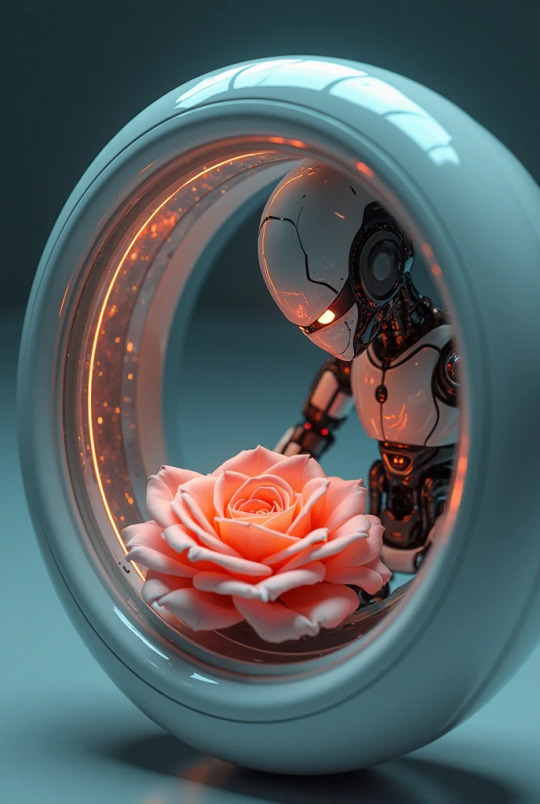
5. When the Cactus Isn’t Needed
Even cacti have their limits. The BAS16 sighed:
“I’m not for ultra-low power devices—Schottky diodes save energy, though they’ll falter in storms. I’m not for art projects—save me for tech that matters. And I’m overkill for disposable gadgets—let cheaper diodes handle landfill-bound toys.”
“So when do you shine?” I asked. “When the project matters,” it said. “Fire, radiation, interns… if it’s worth doing, it’s worth doing with something that lasts.”
6. How to Find a True Friend
In the market of diodes, not all are real. The BAS16 warned:
“Beware of counterfeits—they fail faster than a child’s promise to water a rose. Trust distributors like Ersa Electronics. Check for Vishay or Nexperia markings. Demand certifications—fakes can’t fake those.”
“How do I know it’s you?” I asked. “You’ll feel it,” it said. “A real diode doesn’t shout. It just… works.”
7. The Star That Never Fades
In 2050, when humans build colonies on Mars, the BAS16 will be there. It’ll power quantum computers (even qubits need something steady), Mars habitats (cosmic radiation can’t break it), and robot arms (when AI overlords revolt, they’ll use it to build… well, let’s not think about that).
“You’ll outlive us all,” I said. “No,” it replied. “I’ll just keep holding. Because stars don’t stay in the sky by magic—they stay because something anchors them.”
The Secret of the Little Diode
The BAS16 isn’t flashy. It doesn’t need a name in lights. It’s the kind of friend you notice only when it’s gone—like the rose in the garden, or the fox’s footsteps in the sand.
“What makes you special?” I asked, as I packed to leave. It didn’t answer. It just switched a signal, steady as the desert, as the stars, as time itself.
And I realized—important things are never the loudest. They’re the ones that stay.
Written by a wanderer who once mistook a diode for a new planet. The BAS16 set me straight.
🌵 You become responsible, forever, for the diodes you ignore.
1 note
·
View note
Text
Study tips & tricks to follow before ASVAB Test
ASVAB TEST PREP : JOIN US AT PRIVATE STUDY GROUP 👈.
Use the Process of Elimination If unsure of an answer, eliminate obviously incorrect choices to improve your odds of guessing correctly. Skip tough questions and return to them if time permits. Don’t spend too much time on a single question. Move on and come back later if necessary. Take ASVAB practice tests 👈 to identify weak spots.

Here are some important question those have been encountered in ASVAB Test:
What is the purpose of a capacitor in a semiconductor circuit?
a) To amplify signals b) To store electrical energy c) To increase current flow d) To block voltage
Answer: b) To store electrical energy
Which device emits light when current passes through it?
a) Rectifier diode b) Zener diode c) Light-emitting diode (LED) d) Photodiode
Answer: c) Light-emitting diode (LED)
What is a Schottky diode primarily used for?
a) High-speed switching b) Voltage regulation c) Light emission d) Current amplification
Answer: a) High-speed switching
JOIN US AT ASVAB TUTORING TO GET STUDY MATRIALS AND RESOURCES.
#carrier aviation#military#air force#us army#us marines#navy#royal navy#us navy#marine biology#helicopter#asvab online courses#asvab test prep#asvab study tips#asvab online classes#asvab prep#asvab test#astb test prep 2025#astb test prep#astb exam#us army veteran#us army helicopter#us army chorus#us armed forces#us air force
1 note
·
View note
Text
Understanding Circuit Board Electronic Components: A Comprehensive Guide
In today's digital world, electronic devices have become an essential part of our daily lives. But what makes these devices tick? At the heart of every electronic device lies a circuit board—a masterpiece of tiny electronic components working together to perform complex tasks. In this article, we’ll dive deep into the fascinating world of circuit board electronic components, exploring each element’s role and how they contribute to the overall functionality of the device.
What is a Circuit Board?
A circuit board, often referred to as a PCB (Printed Circuit Board), is a flat board used to mechanically support and electrically connect various electronic components. These components work in unison to perform a specific task. Think of the circuit board as the skeleton and nervous system of an electronic device—it holds everything together and allows communication between parts.
Types of Circuit Boards
Single-sided PCB: Has one layer of conducting material.
Double-sided PCB: Contains two layers for components and connections.
Multi-layer PCB: Complex boards with multiple layers for advanced applications.
The Role of Electronic Components on a Circuit Board
Every electronic device you interact with is powered by a carefully designed circuit board filled with various components. These components might be tiny, but each one has a critical role in the operation of the device. Here's a breakdown of the most important electronic components you’ll find on a typical circuit board.
1. Resistors
Resistors are fundamental components that control the flow of electrical current. They resist the flow of electrons, hence the name "resistor." Their primary function is to reduce current flow, adjust signal levels, and divide voltages in a circuit. Without resistors, circuits would allow too much current to flow, potentially damaging other components.
Types of Resistors
Fixed resistors: Have a set resistance value.
Variable resistors: Allow adjustment of the resistance.
2. Capacitors
Capacitors store and release electrical energy in a circuit. They are often compared to small rechargeable batteries that quickly charge and discharge. Capacitors help smooth out fluctuations in voltage, filter noise, and store energy for future use.
Common Uses of Capacitors
Energy storage
Signal filtering
Voltage stabilization
3. Inductors
Inductors are components that store energy in a magnetic field when electrical current flows through them. They resist changes in current and are typically used in circuits to filter signals, manage power, and store energy.
Applications of Inductors
Power supplies
Radio frequency circuits
Noise suppression in circuits
4. Diodes
A diode is like a one-way valve for electricity, allowing current to flow in only one direction. They are vital in circuits to prevent reverse currents, which can damage components.
Types of Diodes
Light-emitting diodes (LEDs): Produce light when current flows through.
Zener diodes: Regulate voltage within a circuit.
5. Transistors
The transistor is a versatile component used to amplify or switch electronic signals. In essence, transistors are like tiny switches that turn signals on and off rapidly, making them essential in modern electronics.
Types of Transistors
NPN transistors: Allow current flow when a small voltage is applied to the base.
PNP transistors: Conduct when the base is negatively charged.
How Circuit Board Components Work Together
In a circuit, each component has a specific role, and together they form a cohesive system. For example:
Capacitors and resistors may work together to filter signals or smooth out voltage fluctuations.
Transistors and diodes ensure that signals are amplified or directed properly.
Integrated circuits handle the complex tasks, processing data, and controlling the overall system.
Choosing the Right Components for Your Circuit Board
When designing or repairing a circuit board, choosing the correct components is crucial. Some factors to consider include:
Voltage requirements
Power consumption
Signal type and frequency
Physical size and compatibility
Conclusion
Circuit boards are an integral part of any electronic device. The various components on the board each play a specific role in ensuring the device functions as intended. Understanding these components, from resistors to integrated circuits, is essential for anyone working with electronics, whether you're designing a new system or troubleshooting an existing one.
2 notes
·
View notes
Text
Working on Sophias Story again :D
-> A little later, Sophia reached maintenance shaft [xy], where the main security system of the SD of the Abyss Chrusher was located. The light activated by a motion sensor flared up in cold white with a delay of a few seconds. Neon Xilkor tubes of the NX-6 series had this somewhat unpleasant habit, which the manufacturer Asterisk never rectified. Despite this, Hallinger-FTL continued to install them in all maintenance rooms of their ship series to this day. The Davar class in particular suffered from this fact, as it had a higher number of such areas due to its modular design. As a result, Sophia had only been able to recognise the large control cabinets and component racks by the myriad of flashing LEDs when she arrived. This sea of red, orange and green diodes, which greeted her auspiciously from the steel racks, secretly watched over the entire crew and ensured that the safety units of the individual SERAHs were working.
Now that the white light flooded the room, she saw it in its entirety, and with it the technology inside. In contrast to the blinking confusion of the Sevix control racks on the right side of the room, the Servagul control cabinets on her left, unusual for a Davar-class ship, emitted a soft green glow. The reason for this was that Servagul built light panels into the doors of their products, which no self-respecting shipbuilder needed. Such nice lighting did nothing but waste power unnecessarily. Sure, ships like the Abyss Chrusher might not lack power, but that was no reason to be so wasteful.
Shrugging her shoulders, the engineer lifted her tool and the testing device before taking them to the control cabinet labelled SUR-2, where she set them down. She unlocked the door with her CAM and the handle whirred out, allowing her to open the cabinet. Sophia sighed, pulled open the cupboard door and, coloured by the light from the front panel, saw another flood of flashing or glowing diodes emanating from the security register cards. It was a sight that filled the engineer with joy, because she had hardly been able to wait to get back into the bowels of the Abyss Chrusher, but the work that was to follow was rather dull. So she plugged her headphones into her CAM, put them in her ears and switched on an album by a band Liv had shown her a few days ago. A harsh guitar riff accompanied by the vocals of a woman singing in the language of the Marlan system rang out.
She then began checking the security tabs, which initially consisted of informing the SD-SERAH of her work via the control panel in the top frame of the device. In fact, Sophia was only slightly keen on an emergency lockout of the SD, even if she could override it with her system authorisations. Basically, you had to give Servagul and Sevix credit for the cleverness of their products. After all, the automatic security system, which according to Ela - unfortunately there were no plans on this subject - summarised one subsystem of the drive per cabinet in order to pass them on to SERAH in a bundle.
You could imagine the tabs and their subsystems as the nervous system of a body, which transmitted every pain of the machines to the consciousness or to an AI. SERAH then reported the information to the Abyss Chrusher's SAM, the ship's main AI, which ensured that appropriate action was taken. What the SERAH was to the SD, the SAM was to the entire ship.
Sophia pulled a small screwdriver from the side pocket on her left arm. She used it to loosen the two neck screws on the top and bottom of the front panel of each of the seven assemblies. She was then able to pull them out by the handle to insert them into the test device. This established a serial, wired connection with the fuse register in order to then interrogate the main function of the unit on the two circuit boards of the modules. For this purpose, the test device simulated a fault by sending a specific signal sequence via the bus interface. The module processed this within a few femtoseconds and signalled an alarm back to the test device. At least that's how it worked when everything was OK. The process only took a few blinks of the eye until the technical measurement results - such as resistance, time and induction values - appeared on the display of the test device. Confirmation of the success or failure of the analysis could then also be obtained.<-
The story of the empty sky - 1 Dreams of electronic tears Chapter 10, A fairy tale of normality
#writing#booklr#books#books and reading#books and literature#writerscorner#author#books & libraries#writers on tumblr#science fiction#science fantasy#spaceship
2 notes
·
View notes
Text
Electronics Components and Uses:
Here is a list of common electronics components and their uses:
Resistor:
Use: Limits or controls the flow of electric current in a circuit.
Capacitor:
Use: Stores and releases electrical energy; used for filtering, timing, and coupling in circuits.
Inductor:
Use: Stores energy in a magnetic field when current flows through it; used in filters, transformers, and oscillators.
Diode:
Use: Allows current to flow in one direction only; used for rectification, signal demodulation, and protection.
Transistor:
Use: Amplifies and switches electronic signals; fundamental building block of electronic circuits.
Integrated Circuit (IC):
Use: Contains multiple electronic components (transistors, resistors, capacitors) on a single chip; used for various functions like amplification, processing, and control.
Resistor Network:
Use: A combination of resistors in a single package; used in applications where multiple resistors are needed.
Potentiometer:
Use: Variable resistor that can be adjusted to control voltage in a circuit; used for volume controls, dimmer switches, etc.
Varistor:
Use: Protects electronic circuits from excessive voltage by acting as a voltage-dependent resistor.
Light-Emitting Diode (LED):
Use: Emits light when current flows through it; used for indicator lights, displays, and lighting.
Photodiode:
Use: Converts light into an electric current; used in light sensors and communication systems.
Zener Diode:
Use: Acts as a voltage regulator by maintaining a constant voltage across its terminals.
Crystal Oscillator:
Use: Generates a stable and precise frequency; used in clocks, microcontrollers, and communication devices.
Transformer:
Use: Transfers electrical energy between two or more coils through electromagnetic induction; used for voltage regulation and power distribution.
Capacitive Touch Sensor:
Use: Detects touch or proximity by changes in capacitance; used in touchscreens and proximity sensing applications.
Voltage Regulator:
Use: Maintains a constant output voltage regardless of changes in input voltage or load; used for stable power supply.
Relay:
Use: Electromagnetic switch that controls the flow of current in a circuit; used for remote switching and automation.
Fuse:
Use: Protects electronic circuits by breaking the circuit when current exceeds a certain value; prevents damage from overcurrent.
Thermistor:
Use: Resistor whose resistance changes with temperature; used for temperature sensing and compensation.
Microcontroller/Microprocessor:
Use: Processes and controls electronic signals; the brain of many electronic devices and systems.
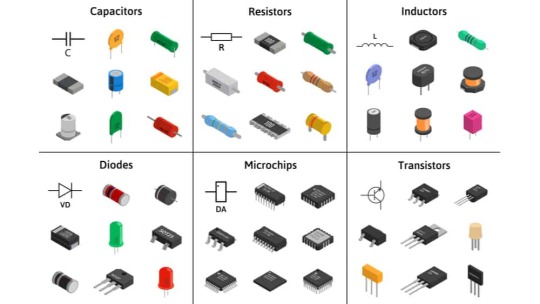
fig:google-electronics

fig:google-electronics
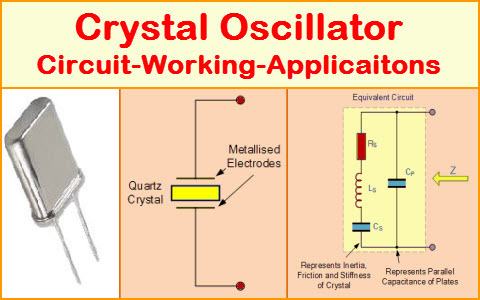
fig:Crystal-Oscillator
This list covers some of the basic electronic components, and there are many more specialized components used for specific applications within the field of electronics.
#electronic#electricity#electric vehicles#electric cars#engineering#semiconductors#wireless#cables#electronics#smartphone#hardware
4 notes
·
View notes
Text
DIY Dumble-like sounding MOSFET Overdrive

The Hermida Zendrive guitar pedal we will study, assemble and listen to today is a true masterpiece. Many say its sound is close to the Holy Grail of guitar amplification - Dumble Overdrive Special.
Other people are more pessimistic in their judgments. Still, the precise response to the picking dynamics, the Voicing tuning options, and the sheer beauty of this overdrive's sound are simply impossible not to love.
But before we study the Lovepedal Zendrive or its copy of the Landtone Phoenix song, or the Aion effects Azimuth dynamic overdrive, we'll study the evolution of the MOSFET overdrives that finally resulted in the development of this gem.
Fulltone OCD

Mike Fuller was one of the first to start using MOSFETs instead of diodes to limit the amplified guitar signal in 2004.
His Obsessive-Compulsive Drive overdrive-distortion pedal is built on a standard circuit with one dual op amp. The first operational amplifier, X1, amplifies the amplitude of the guitar signal by a factor from 8 to 463 times, depending on the position of the drive control X3. This is a 1-megohm potentiometer.

Further, through resistor R9, the signal is fed to the limiter, which comprises 2N7000 MOSFETs M1 and M2 connected in parallel. A germanium diode D1 - 1N34A is additionally included in series with M2, which makes the limiter asymmetrical and, therefore, makes more interesting sound.
A limiter in overdrives is usually included in the negative feedback circuit of an operational amplifier (i.e., in parallel with C6). Such a limiter is called a soft limiter.
And here, a hard limitation is applied: clipping sections are included between the preamplifier output of the gain section and the virtual ground - half of the supply voltage Vref, formed by resistors R4 and R7.
Virtual ground is used in the unipolar powering of operational amplifiers to amplify analog signals, such as audio signals. The guitar signal does not change from zero to plus but from minus to plus, passing through zero.
To prevent the signal from being limited to the circuit's ground, it is shifted in the plus direction by half the supply voltage.
Such hard limiting is typical for distortion pedals. But by using MOSFETs instead of diodes or LEDs, the top of the signal is not cut hard but softly rounded. Therefore, OCD can work as both distortion and overdrive.
Due to the smoothed peaks of the limited signal, the sound is highly dependent on the sound's attack dynamics. For rock and especially blues, this is very valuable. With modern metal pickups that compress the dynamic range of the signal, it can help make solos sounding more sweet.
The second operational amplifier X3 amplifies the limited signal by a factor of 3.8, correcting its timbre. Capacitors C6 and C9 prevent the self-excitation of operational amplifiers at high frequencies.
Next is a simple passive tone knob, which implies a treble leak circuit. Potentiometer X4 10 kilohms and capacitor C11 47 nanofarads are connected in the same way as on the pickguard of any electric guitar.
The Switch1 switch changes the circuit's output impedance as if the high-impedance and low-impedance pickups were switched. When it's open, you get a transparent overdrive like the Klon Centaur, and when it's closed, you can get a more aggressive sound like the Marshall Plexi.
Hermida Audio Zendrive

The Zendrive pedal's authors, Hermida audio technology (now produced by LOVEPEDAL LLC), have undoubtedly studied the Fulltone OCD thoroughly. Let's find the differences between the two circuits.
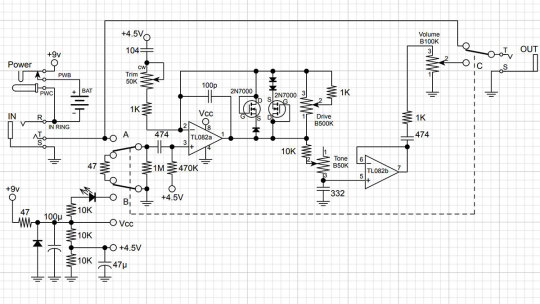
First, the limiter is included in the operational amplifier feedback, that is, between the output and the inverting input, not between the output and virtual ground. That is, here we have a soft limiter.
Secondly, one diode is added in series with each MOSFET. Clipping remains asymmetric: we have one diode in the left arm of the limiter and two diodes in the right arm.
Third, the second operational amplifier is used as a voltage repeater, aka buffer: the output is directly connected to the inverting input.
Fourth, the tone control is implemented a little differently: two OCD`s switchable resistors are replaced by a potentiometer.
And finally, the most critical, fifth difference. A potentiometer is included in the tone correction circuit between the inverting input of the first operational amplifier and the artificial midpoint.
This fourth knob, Voicing, or Character, allows you to smoothly adjust the lower frequencies in the overdrive structure over a wide range, similar to the Resonance control on many tube guitar amps.
The potentiometer is signed as a trimmer in the diagram because some pedal makers don't want to install a fourth knob on the pedal`s body. This is what Landtone did when developing the Phoenix Song Overdrive DIY kit.
The developer suggests installing the trimmer on the PCB, and to access it, you need to disassemble the pedal by unscrewing the footswitch nut and taking out the PCB.
But I will not be lazy to drill an extra hole in the pedal body and install a potentiometer with a knob, connected to PCB by wires instead of the trimmer. Because I consider this regulator simply invaluable and irreplaceable.
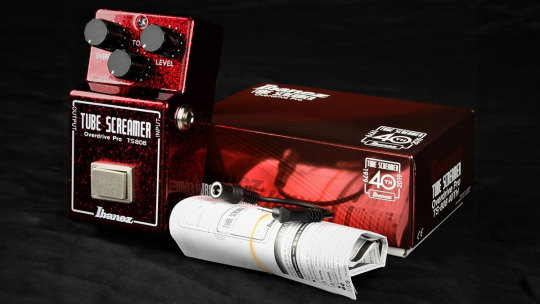
Before we get to assembly and testing, let's look at another pedal with a similar adjustment. However, it is based not on the Fulltone OCD but on the Ibanez Tube Screamer.
The Precision Drive

This is a signature pedal by Misha Mansour of Periphery, manufactured by Horizon Devices. Compared to the original Overdrive Pro TS808, the circuit adds a noise suppressor, which we will not consider, and an exciting ATTACK switch.
The Precision Drive scheme was studied and partially replicated by PedalPCB and PCB Guitar Mania. They are manufacturers of DIY kits for guitarists. Their products are called Dwarven Hammer and Collision Drive, respectively. A noise gate is not provided there, but the attack switch is implemented. This is the main difference between Precision Drive and many other overdrive pedals.
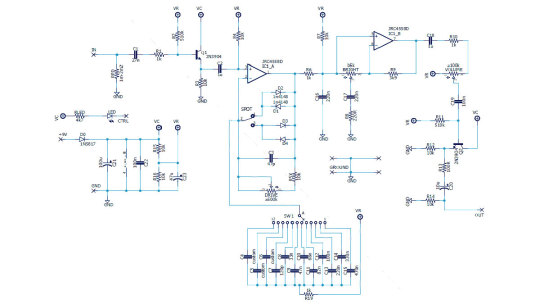
In the Fulltone OCD schematic, we saw a resistor switch at the tone shaping circuit in the output section. The Zendrive has a variable resistor in the preamp's RC circuit which is controlling the overdrive structure.
Precision Drive has a constant resistor in the same place, between the inverting input of the overdrive section operational amplifier and the virtual ground, but the capacitors are switched.
This is the same thing: we change the time constant of the RC circuit, which adjusts the audio signal's frequency spectrum. At the same time as the time constant, the complex impedance changes, thus the gain.
A resistor is a resistance to both DC and AC current. At the same time, a capacitor is only resistant to AC current because DC current does not flow through a capacitor. Since DC current does not flow through our RC circuit, there is no difference between adjusting the resistance and switching the capacitance.
But the active/reactive ratio affects the circuit's Quality factor, i.e., its resonance. It's no coincidence that the knob on guitar amplifiers, which adjusts the same frequencies as our potentiometer or switch, is often called RESONANCE. And it is used to adjust to the resonance of the electromechanical system - the loudspeakers in the cabinet, along with the masses of air in and around it.
The reactive impedance accumulates energy and gives it away, except for losses due to dielectric recharging and magnetizing the magnetic core in inductors. This is why coreless inductors are often used in high-end equipment, so-called air inductors. They weigh a lot, take up a lot of space, and are expensive because copper is more expensive than steel. But these are the laws of physics on which technology is based.
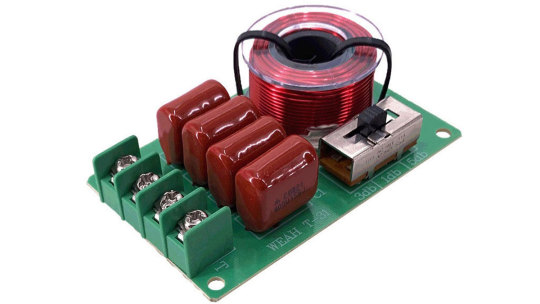
Unlike reactive impedance, active resistance converts electrical energy into heat, thus reducing the Q-factor. In some cases, it is necessary and useful. In others, it is harmful. Or it simply creates a unique sound character.
That's why switching capacitors and turning the potentiometer knob in the feedback circuit of an audio frequency amplifier is almost the same thing, but not quite. And it's great that there are such different variants of guitar overdrive pedals!
Landtone Phoenix Song Overdrive
Now you can hear how my Zendrive from the Landtone OD-1 kit sounds, with a Seymour-Duncan SH4 humbucker on a Gibson MM Explorer guitar, into an Orange MT20 with a Torpedo Captor X. And see how I assembled the pedal and also a kitten walking around the table and prancing around.
youtube
I liked the pedal, especially its fourth magic Voicing knob, which does things to the sound that other tone controls can't. I also liked the bird on the body. Because I love birds. And in the music world, the decoration of instruments and hardware plays no small role because it inspires creativity. And the fact that the pedal is assembled by my hands also warms my soul and creates inspiration.
3 notes
·
View notes
Text
hello! someone very sensitive to flicker here! what's going on here is a notable difference in the speed at which LEDs and incandescent light sources turn on and off. when an incandescent or fluorescent bulb turns on, it generally takes around 100ms to warm up or cool off when turned on or off, respectively, making the change in brightness gradual. when these sorts of bulbs are directly driven by AC at 50 or 60Hz, this amount of time is an order of magnitude longer than the amount of time between the pulses of electrical current, resulting in the brightness fluctuating, but only a relatively small & harmless amount (which can still be noticeable to photosesitive individuals such as myself). LEDs are a whole different beast, taking at most only a couple of milliseconds to turn on (white LEDs generally take more time due to their phosphors and single-wavelength LEDs generally take less time) an order of magnitude less than the time between "pulses" of AC, resulting in the diode going from off to basically full blast and back off every cycle of current, giving them an extremely unpleasant flicker. given that LEDs are much better in so many ways than fluorescent or incandescent bulbs, this downside may seem pretty minor, but it can cause many negative effects for many people, not limited to those who are particularly photosensitive. there is a solution however! a full-bridge rectifier is a simple & cheap circuit to convert AC power to DC, which if inserted between the power source and the LED, removes the flickering altogether, resulting in a longer lifespan as the diode won't be turning off & on constantly, which can cause it to degrade faster, as well as making LED lighting much safer! there are a good amount of LED lights out there being run through rectifiers, but unfortunately most LEDs are still being directly run by AC, making christmas lights & other decorations potentially quite harmful, depending on the viewer.


This is one of those things where the discourse is just completely broken. Both of these takes are shit and no one is concerned about the actual problem.
Republicans want to bring back incandescents because they just want to trigger the libs and have decided light bulbs are woke.
And the "LEDs are fine" crowd are throwing people with flicker sensitivities under the bus. And, no, you don't have to be "pretty far on the spectrum" to notice a difference. And even if you did... why in the world is this person so dismissive of the millions of autistic folks?
LEDs, for the most part, are superior to incandescent bulbs. Collectively they save people billions of dollars in energy costs and greatly reduce fossil fuel use. You have more options for color and brightness. You can control them with your phone. LEDs are fantastic.
Unfortunately there is a design flaw that makes LEDs hard to use for certain people. Due to AC power, most LEDs have a 60hz refresh rate. Meaning they turn off and on 60 times per second. With incandescents this didn't matter because the filament didn't have time to lose its glow between cycles.
Most people cannot see this flicker in LEDs. But there are millions of people who are sensitive to it and it can cause migraines and discomfort.
The solution is definitely not to go back to incandescents. There are flicker free LEDs and I think with some regulation we could make sure all LEDs are flicker free or at least make sure flicker free bulbs are easy to find and not priced at a premium.
Thankfully there is a group testing bulbs to find the ones that will most likely cause no discomfort. They call themselves the Flicker Alliance and their website has a pretty decent selection of tested and approved bulbs.
So if you feel like your LED bulbs might be causing you distress, that is a good resource to try. I think there is also something you can do to make sure the LED drivers are using DC power, but I haven't really looked into that.
9K notes
·
View notes